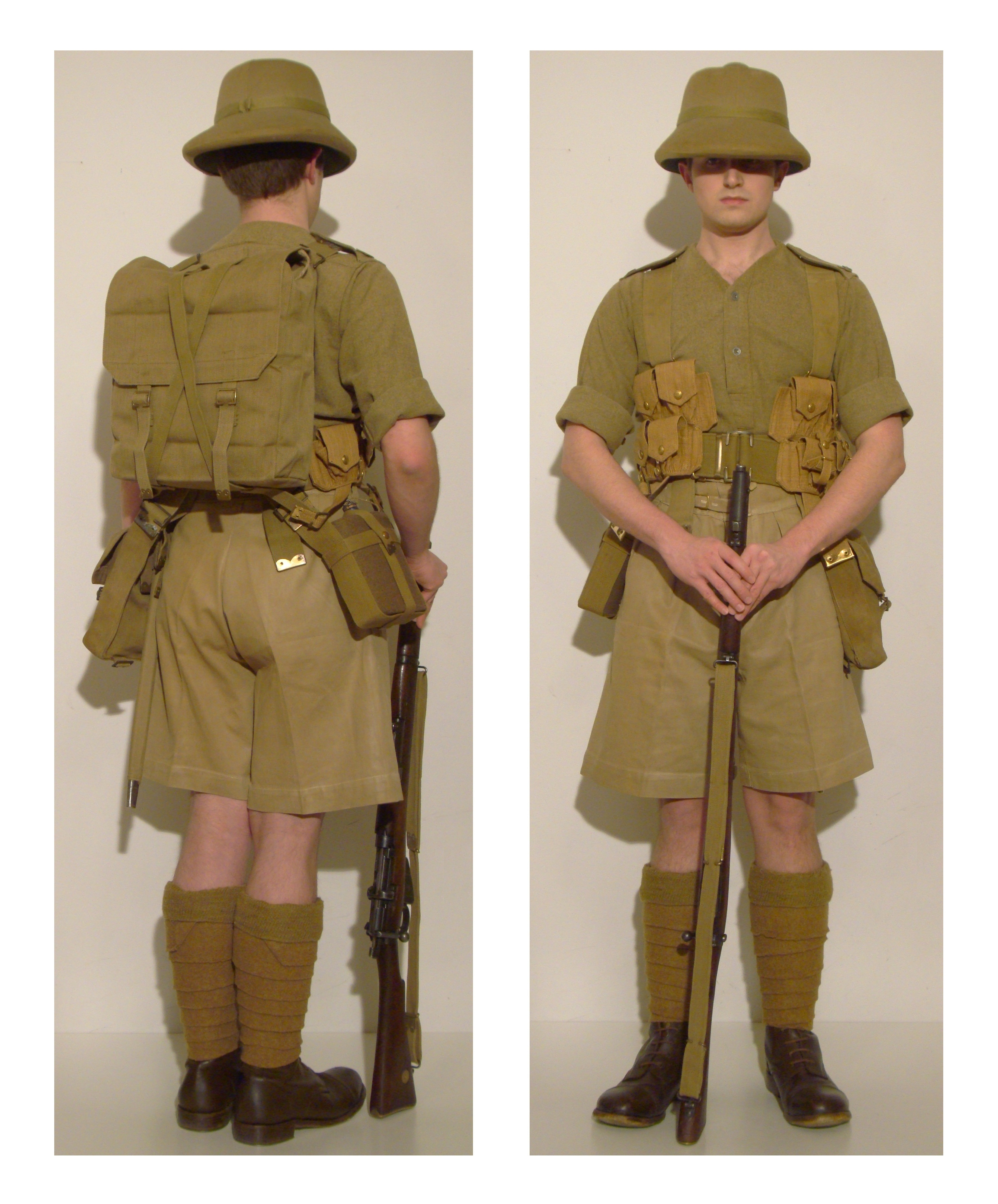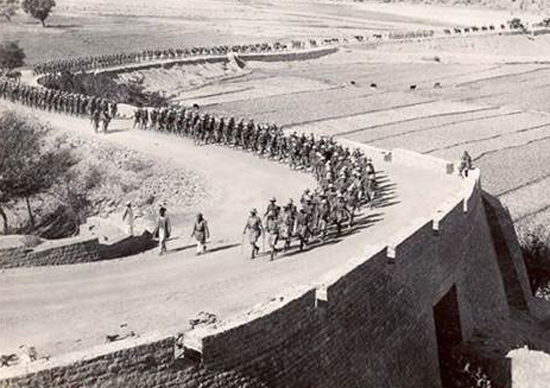 The Waziristan Campaign (1936-1939) was a series of operations by a combined British and Indian force intended to restore Imperial Prestige in the Waziristan region of the Northwest Frontier of British India. Early reverses of the British by tribal Lashkars caused widespread insurrection among Wazirs, Mahsuds, Bhittanis, and Afghans under the leadership of the mysterious Fakir of Ipi. At the height of the campaign, 60,000 imperial troops were garrisoned on the frontier in towns like Razmak, Bannu and Wana.
The Waziristan Campaign (1936-1939) was a series of operations by a combined British and Indian force intended to restore Imperial Prestige in the Waziristan region of the Northwest Frontier of British India. Early reverses of the British by tribal Lashkars caused widespread insurrection among Wazirs, Mahsuds, Bhittanis, and Afghans under the leadership of the mysterious Fakir of Ipi. At the height of the campaign, 60,000 imperial troops were garrisoned on the frontier in towns like Razmak, Bannu and Wana.
This Warwickshire private, shown above, has recently marched into Razmak with his column to relieve the regiment stationed there. By this time, most hostilities have died down apart from the occasional village raid or attack on a garrison.The uniform depicted here represents the combat dress worn by British troops in the hostile stations of India. (Waziristan)
1) Khaki Solar Pith Hat pattern helmet; although the Wolseley was still largely worn in peaceful stations of India, the Khaki Solar Pith Hat became standard form of helmet for active service in hostile areas. This was in large part due to its lighter construction, which was greatly appreciated by mobile troops operating in the tribal regions of British India’s border with Afghanistan.
2) Other ranks collarless shirt; this half-fronted wool flannel shirt was widely worn on the Northwest frontier. If features gunmetal buttons and epaulettes with brass Warwickshire Regiment shoulder titles. Photographic evidence suggests that the band collar was often folded down to give the shirt a V-neck appearance. It is shown here in ‘shirtsleeve order’ with cuffs rolled up above the elbow with a four finger width.
3) Pattern 1908 Web Equipment; here shown in full marching order. When the British Army adopted this pattern, the advantages over previous leather equipment sets were obvious, namely…
a. The component parts of the equipment are all directly connected together allowing the soldier to put on or take off the set in one piece like a waistcoat.
b. The equipment is perfectly balanced and unlike previous patterns, the belt is not pulled up in the front by a heavy load on the back.
c. There are no straps crossing the chest so the soldier can undo the waistbelt and unbutton the tunic while on the march.
d. Flexibility of the equipment allowing for various configurations of the component parts.
Following the Great War large stocks of this innovative web equipment remained in stores, by 1939 however, this pattern had been largely eclipsed by Pattern 1937 at home. Pattern 1908 remained in service much longer in the colonies. Note the bayonet scabbard with cloth KD cover; this was a common practice in India and was most likely used to prevent the scabbard leather from marking the KD uniform in the heat. (Thorne)
4) ‘Shorts KD’ cut very full. The waist was adjusted by to cotton straps and patent buckles. (Mirouze WWII)
5) Long socks or ‘hose tops’ suspended by elastic garters; here concealed by the turned down tops. (Mirouze WWII)
6) P1902 khaki cloth puttees, secured by tapes. (Mirouze WWI)
7) Hobnailed ‘Ammunition boots’. (Mirouze WWII)
8) Rifle No.1 Mk.III*, the Short Magazine Lee Enfield of .303in. calibre used by the British infantryman since the Great War. This bolt-action weapon, with a removable magazine holding ten rounds, was robust, reliable, expensively made, and in the hands of a trained man was capable of accurate and surprisingly rapid fire. (Mirouze WWII)
“Waziristan Campaign (1936–1939).” Wikipedia. Wikimedia Foundation, 30 Jan. 2013. Web. 31 Jan.
2013.<http://en.wikipedia.org/wiki/Waziristan_campaign_(1936-1939)>.
Mirouze,Laurent. World War II Infantry: In Colour Photographs. London: Windrow & Greene, 1990.
Print.
Thorne, John, and Rog Dennis. “Karkee Web.” Karkee Web. Karkeeweb.com, 28 Dec. 2008. Web. 23 Feb.
2012. <http://www.karkeeweb.com/>.

